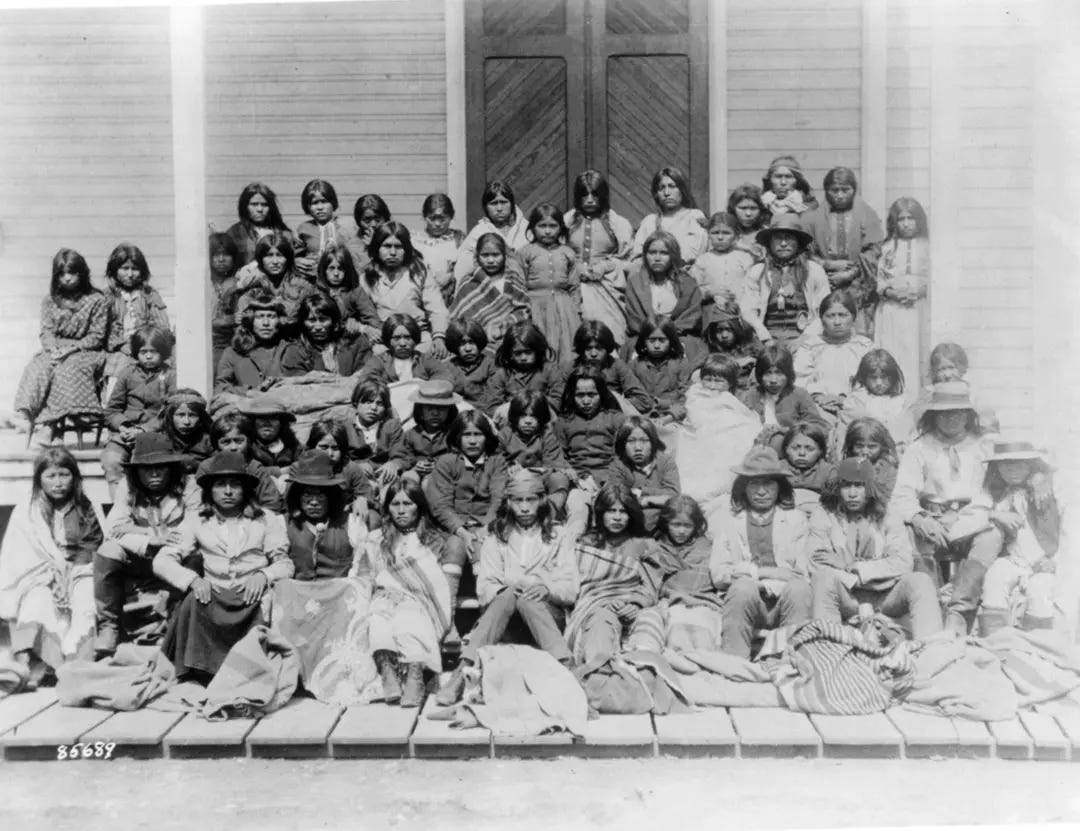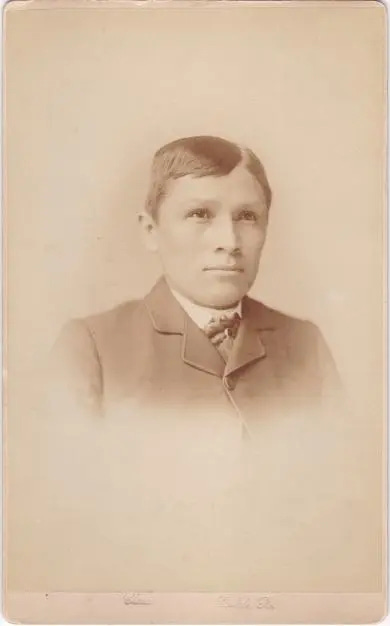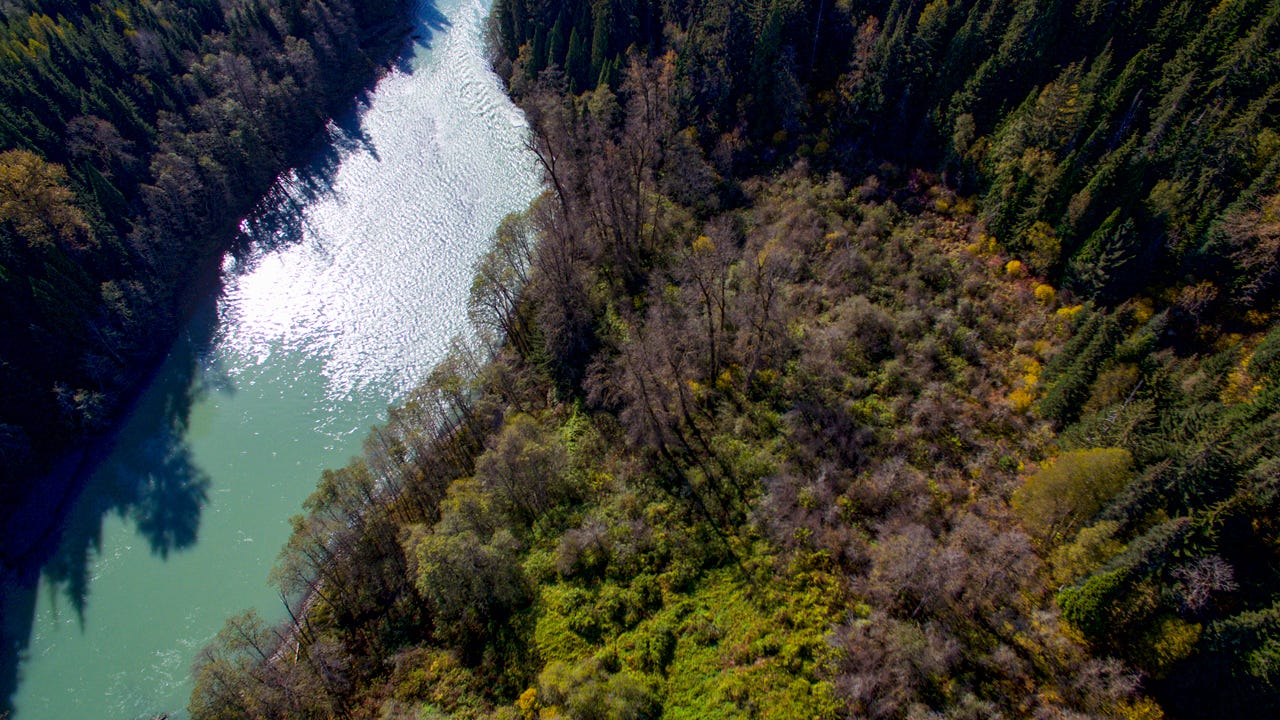Western Problems: Indigenous Solutions
Cultural Genocide, Western Environmental Degradation, Forest Gardens.
Mystic to you medicine to who
Western technocrats have long lauded the marvels of medicine and science-
when developed by white people, of course.
African, Asian, and more recently Indigenous American medicine and science have long been labeled as primitive, and heavily stigmatized in the global consciousness. We’ve all seen comic portrayals of acupuncture, herbal remedies, witchcraft, voodoo, black magic, and cupping techniques. The vast array of non-western practices exists in the Western medical imagination as “quackery and barbaric”.
The perceived inferiority of non-Western medicine is more than just narrative prejudice, but an arm of systemic oppression and colonialism. It is what was, and continues to be, used to justify the rapid colonization of global wisdom by Western powers.
If doctors and medical treatments can be labeled shams, and the experts of a region as unqualified, we can manufacture a crisis that can only be solved with external, Western assistance.
The necessity for US intervention, IMF loans, the World Bank, the WHO, and the countless other fangs of Western technocratic hegemony all sink deep into the “developing world”. This establishes an epistemic hierarchy, the underlying condition needed for exploitation.
As these white saviors come in with their white coats and Western systems, they forcibly take leadership in communities. The wealth of aid and resources, domestic and foreign, are now concentrated in their palms, not the populations they reign. In this case, authority and governance become compensation for some perceived Western competency and civility. Just look no further than US dollar diplomacy in Latin America.

Perceived Western superiority wasn’t exclusively material, philosophically Western imaginations and ideology are granted the same privilege. Theories and concepts of the West are deemed valid, while non-Western ones are pushed to the margins. In this ideal Western world, only they reign supreme.
Unfortunately for the West, reality has shown us that the “developing world” is just as capable. With regional knowledge across Asia surpassing many European principles and methods. Terrace farming, semiconductors, and high-speed railways are just jewels within the wealth of Eastern developments competing with and eclipsing Western creations. Historically, contributions to mathematics and science from Africa and the Middle East have been the most significant in the world, despite these regions today being marked as “under-developed”.
The classification of the world developed and developing, east and West, first and third, hierarchically divided regions based on their proximity to established power systems. But embedded in this hierarchy was systemic delegitimizing and mystifying of non-Western creations.
For all the damage done culturally and socially, mysticism has done nothing to erode or destroy the actual quality of the thoughts and work of non-Western people. As observed most notably with Indigenous American wisdom, that has astounded modern scientists and historians alike.
So let’s explore the Indigenous American imaginary to uncover the creations Western mainstreams have smeared, ignored, and destroyed. To showcase the true complexity and validity behind these practices of non-Western origin, appreciate the ramifications they have for the world moving forward, and celebrate these achievements as marvels of world history. This is an ode to Turtle Island’s most misunderstood inhabitants.
Welcome,
I’m The Librarian and you are reading The Garden Library. This is a blogcast that tackles a variety of topics with a skew towards climate and environmental policy. This is Chapter 1, Page 5 and we are discussing Tribal Knowledge.
As it stands, much of Indigenous American wisdom is shrouded in the blank spots of history caused by lost cultural wisdom and land. So before we highlight the wealth of insight they had, let’s rewind a bit to understand how we got here.
The Oppression of Western Hegemony
To understand Indigenous history, you must be aware of the dimensions of oppression at play, and the catastrophic impact their intersection has caused. Of the many that exist, there are 4 root oppressive systems: colonialism, racism, religion, and capitalism.
Colonialism was the mechanism that stripped Indigenous people from the lands of their ancestors, physically and violently divorcing them from cultural practices and geographical history. Europeans established satellite colonies in the Americas via force, the mass killing of all who stood in their way. Even today, native land is continually encroached upon and stolen. But why?
This leads us to Racism. Racism was the “otherizing” ideology needed to justify the oppressive “civilizing” by Western settlers who captured land and people. It was the lens with which Social Darwinism was penned. This new ideological doctrine was what separated Indigenous people of all kinds from Europeans, and gave reason to why they needed to be subjugated. But once subjugated, racism truly bore its fangs. The perpetual perverting of all things Indigenous and steady pull towards all things Western, and the rationale behind the cruelty imposed by Western rule. Racism now flourished in the systemic destruction of “inferior” culture, and the reactionary cruelty inflicted on these native neighbors.
The purpose of religion was twofold: Christianity was the banner colonialism often sailed under, and the religion Indigenous tribes were brutally indoctrinated into. Religious missionaries were often the pioneers of colonial expansion, with voyages often financed off the church’s money, and initial contact often being religious in nature.
Once settled, these Westerners began a campaign to convert natives into Christianity. This process required the upheaval of all Indigenous beliefs, which often contradicted Christian epistemology. So how did they accomplish this? To be brief, with cultural erasure and brutal consequences for natives who didn’t comply.
Lastly, Capitalism was the value system that ensured all Indigenous creations based on community, creativity, and compassion were made worthless against the backdrop of profits. Not long after religious missionaries laid the colonial foundation, these racist capitalists bulldozed what remained and built factories atop its ruins. The need for diplomacy or inclusion of natives was irrelevant to the desire for new markets and economic superiority. The need for biodiversity, nature, and wildlife was less than the desire for raw materials.
As prophets became profits, religious colonialism beget racist capitalism.
Cultural Genocide
The following topic will be discussed in significantly greater depth in Chapter 2.
This tiered system of oppression amounted to the complete cultural genocide of Indigenous people. Nowhere is this better demonstrated than the experience of native children forcefully indoctrinated in boarding schools.
“American Indian” boarding schools were designed to assimilate Indigenous people into American culture and living. This process for these children was incredibly…disturbing to say the least.
Children were:
Forcibly taken from their families.
Stripped of their name and given European names.
Forbidden from speaking the native language and made to learn English.
Forbidden from practicing Indigenous spirituality, medicine, or cultural practices.
Forbidden from wearing traditional clothing.
The consequences of disobedience could range from brutal abuse to death. With even obedient children being malnourished, forced into heavy labor, and subject to nothing short of torture.
To drive home just how disturbing this torture could be, Bill Wright, a former student at Stewart Indian School in Nevada, told NPR of how at the age of 6 he was bathed in kerosene and had his head forcefully shaven. He also recalled a student being beaten bloody and being forced to lie and say he “ran into the wall” to the hospital staff or risk retaliation(Bear).
This process of immense violence and cultural indoctrination according to Captain Richard Henry Pratt, the founder of one such boarding school,
“killed the Indian, and saved the man”.
Not only did this mean a death of cultural practices, spirituality, values, and language, but of identity and sovereignty. The term Native American mirrored the assimilated identity of former enslaved people now called African Americans. Iroquois, Cree, Odawa, or Lenapehoking, the ethnic group these children would formerly call family is no more. The loss of a tribe to call your own, meant if nothing else, all Natives from then onward were Americans first.
I think the most saddening aspect was shown via this pair of images of an Indigenous child, newly named Tom Torlino(Little). If you scroll up, that former image is of the same child, before and after attending one of these boarding schools. What makes this so sad, aside from just the visible difference, is the name.
Tom Torlino isn’t his name, but the one they forcefully gave him. His native name was unfortunately lost in the blank spot of history, as so much Indigenous culture was. To be forced to remember one of these harmed souls, by their “dead name” is saddening.
To lose connection to one’s history is bad enough, but to lose one’s self is entirely different. The identity crisis American indoctrination created in these newly born “Native Americans” often resulted in lifelong issues. Ranging from depression, and suicide, to generational trauma of violence.
These boarding schools didn’t assimilate children, they assassinated them, and in the corpse of what was left America rebuilt in her image.
Land Capture and Environmental Degradation
The few centuries of European colonialism and American expansion have left Indigenous people not just without a culture, but without a home.
Indigenous land holds not just the geographic memory and knowledge of these tribes, but sacred grounds, burial grounds, and cultural history. Unfortunately, much of this land is no more. Research shows a near total reduction in Indigenous lands from historical amounts “with a 98.9% reduction in cumulative coextensive lands and a 93.9% reduction in non-coextensive lands”(Farrell).
With this newly stolen land, Americans began a campaign of plantation agriculture and deforestation. Wilderness became a place of resource extraction, and fertile land was a place of profits. A process that after the industrial revolution massively upscaled. As of today, over 75% of natural American forests have been destroyed(DBG). This creates an ecological hole, what once would act as a carbon sink, a flood barrier, and provide shelter and necessary regulation of nutrients, is now replaced with a Walgreens parking lot.
It doesn’t take a PhD to know that’s gonna cause severe issues, and god damn did it cause some problems! The urban heat island effect, air pollution, disruptions to migration patterns, climate change, disaster vulnerability, and biodiversity loss, I couldn’t list all the issues deforestation has caused America and the world. And for what little forests remain exist in reserves and national parks, which hardly prevents intrusion. Tourists, Hikers, Pipeline companies, the US military, just about any excuse is good enough to get a free shot at harming crucial forest ecosystems. Either from pollution or the risks posed by further expansion.
What about beyond the forests? What of the land that isn’t currently a city and reserved for agriculture? Surely that land fares better….right?
Hell no!
Industrial American agriculture has gone against every principle of ecosystems and the environment that we know. It prioritizes large plots of monoculture crops, oftentimes corn, that are mechanically tilled from the ground once ripe. This process if violent for the soil, destroying its quality, depleting all the nutrients from it, and causing erosion. There’s also a huge risk for disease, as a disease that can infect one corn, will infect all of them in a field without any buffer.
Chemical fertilizers and pesticides are used by the tens of millions of tons on US cropland to the detriment of wildlife and the soil. As fertilizers oversaturate the soil with Nitrogen and Phosphorus, they leech into groundwater aquifers and run off into rivers and lakes. This causes nitrates to accumulate in drinking water, poisoning our livers and causing a wide variety of health problems.
In waterways, it causes massive algal blooms which release toxic gases, accumulate pathogens, and create dead zones. These dead zones of depleted oxygen in water kill, everything, and one such dead zone (pictured above) is 6,500 square miles caused by nutrient pollution from the Mississippi River Basin(EPA).
With pesticides and herbicides, they don’t just attack the intended target. Instead, they kill off countless beneficial pollinators and keystone species, which lead to biodiversity loss across the board. These poisons don’t just disappear either, they linger on crops, in the soil, and even in the air. Which doesn’t just harm microorganisms and wildlife, but people.
The agricultural workers on these farms often develop lifelong medical complications ranging from organ failure to cancer, and every year thousands of farmworkers fall ill from pesticides. Even off the farm, consumers aren’t safe from harm.
As we pick up food from the grocery store, it’s the unassuming fresh produce with potential lethality. While DDT is no longer in use, many modern pesticides can cause neurological damage and other organ issues (including organophosphates and carbamates). So it’s quite a shocker to find that Consumer Reports found pesticides posing significant health risks in 20% of produce examined in their study(Roberts).
An apple a day might keep the doctor away. But an unwashed one could put you in the ER.
With numbers that high, remember to wash produce before using them!
The Western Environmental Problem
Unsurprisingly, nutrient depletion of soil, overreliance on chemicals, and mass industrial deforestation have created a giant problem for the West. Despite centuries worth of conquest, Westerners still breathe air, drink water, and live on Earth.
So the death of America’s landscape came with the promise of the death of Americans: the poisoning of waterways, air pollution, the heat island effect, biodiversity loss, and widespread disease. For all that modern Western technocracy, there is an awful lack of critical thinking.
But this problem has ballooned outside the West’s control, with environmental issues and conflict being the theme of this century. Despite all the issues created, seemingly very few Western thinkers can produce a solution. What solutions are thought of seem inadequate. Some brilliant minds (cough Alex Jones cough Joe Rogan cough Elon Muskc cough Donald Trump) have suggested space exploration, nanomachines, and GMO by AI as potential remedies to aformentioned issues. And it’s here, at the end of reasonable Western capability, that we can look back at what was lost.
To find that the solution to these environmental issues isn’t in AI, or some brilliant mind yet to be discovered, but in the past. In the tribal wisdom and cultural practices of the very stewards of Earth now stripped from their home, their name, and their identity. The Indigenous people hold the solution the West now desperately needs.
Unearthing Tribal Knowledge
As experienced with the Indigenous Fijians in Disaster or Design, the way of life and wisdom of natives is regionally unique and unrepeatable. Through centuries worth of coexistence with nature, Indigenous culture has cultivated knowledge of medicinal herbs, poisonous plants, storm signs, navigation techniques, and even animal tracking strategies. These transferable skills make Indigenous people well suited to hunt, farm, and live in regions often filled with hazards and dynamic conditions.
Whether it’s the desert, forest, coastline, or mountains, natives developed a way of life that money can’t buy. A way of life so effective and efficient, that Western specialists both struggle to understand and could never replicate with machines or chemicals. But less obvious are those practices and beliefs on Indigenous land use, gardening especially.
In North America, this is most demonstrated by the agricultural practice of forest gardens. Which, until very recently, was largely unnoticed in the scope of history.
Look at the image above, anything jump out at you?
If your answer was no, you’d be in agreement with the vast array of scientists throughout recent history. But in the past decade researchers have uncovered that throughout regions of ancestral indigenous lands are patches of deliberately grown species of plants. These patches have been aptly named forest gardens, both a forest patch that contains a garden, and a garden that looks an awful lot like a forest!
These forest gardens, as researched in the Pacific Northwest, contained a vast assortment of species for eating, fuel, medicine, and even technology. Hazelnuts, crabapples, cranberries, hawthorn, Indigenous people planted a diverse and ecologically genius assortment of plants. These gardens even today are incredibly productive and sustainable, something modern industrial agriculture has spent billions trying to replicate with little success.
But beyond being practical, these forest gardens, even generations after Indigenous people have left these region, are ecological hotspots. These gardens have proven incredibly hard to kill, being able to stave off disease encroachment by invasive species, and disasters. The diversity of these gardens is what creates this resilience.
But where the true power of these forest gardens comes from is how well they compare to nature. In fact, researchers found that Forest gardens had:
Larger Seeds
More animal-dispersed species
More shade-tolerant species
More insect-pollinated species
Higher functional evenness and functional dispersion
Significantly higher species richness than the periphery forests (Armstrong).
Across the board Indigenous forest gardens, even 150 years later, out compete their surrounding forest ecosystem when it comes to biodiversity and resilience. This means forest ecosystems were not just convenient for Indigenous people, they also benefitted nature.
Take a moment to recognize the significance of data like this. Proof from the halls of Western academia recognizes the value of Indigenous practices. It further showcases that these weren’t barbaric or primitive groups, nor a mystical batch of supernatural people. Western imagery likes to dehumanize and other the knowledge of the indigenous world. But in truth, the first scientists, ecologists, gardeners, historians, and researchers were indigenous. I always love it when researchers can stick it to Western hegemony.
Technocratic Hydra and the Epistemic Empire
That last line is especially important when you consider what is the difference between Western and Indigenous practices in the natural world. Many believe that humans are natural disruptors “invasive species” that can only harm the planet around us. Western practices of exploitation, extraction, and ecological execution certainly suggest that humans have a great capacity for destruction and degradation of the natural world. But this is a largely new development.
For the vast majority of humanity’s existence on Earth, for the centuries Indigenous practices were in place. Humans benefitted the Earth, cultivating enclaves of biodiversity, assisting in natural processes, and acting as stewards of the world around us. At a time when Earth is most polluted, these lands most damaged, Indigenous gardens are just one example in a forest of tribal wisdom on how we can reimagine our relationship to Earth (pun intended).
Why do we spend billions on chemical fertilizer and pesticides to create mass fields that need constant supply of resources and maintenance? Especially when practices like forest gardens exist.
Remember how much of Western ideology is based on oppressive systems, the Western imaginary of racism, capitalism, colonialism, and religion all lend towards a self destructive hydra. With each overengineered technocratic solution to resolve a problem borne from societal inequity, three more problems are birthed in its place.
It’s not just that the West is incapable of creating a solution, but that doing so requires stepping outside the comfortable unequal world they’ve crafted around themselves. That is why western technocrats look up and onward, that’s where capitalism’s growth mindset is borne.
If we just keep growing we will outpace our issues. Afterall, most issues are felt first and foremost by those minority groups and developing nations. We can just buy our way into comfort, drier lands, more food, and cleaner air.
The powers that be have spent a lot of time and money running a smear campaign against culture, and creation outside their power. The centuries-long systemic erasure, mysticism, and vilification of all things non-Western has dealt irreparable harm to these populations and epistemology at large.
But no matter how much misinformation and disinformation exists, the facts always shine truth. With the resurgence of Indigenous practices and culture, the research and uncovering of what was lost. Western hegemony has begun to crack, and now the weight of easy access to communication via the Internet threatens to erode their epistemic empire. The only way for the West to stall this inevitable process is to halt the adoption of practices and beliefs outside their creation. The technocratic hydra is the last stand against the promised revolution of ideas and culture that will transform relationships to power, people, and land.
Prune at the Roots, All the Roots
To be honest, Indigenous theology is a very complex and rich aspect of native life that influenced much of these practices and beliefs. From the two-spirit gendered identity, the focus on good faith participation, to the interconnected nature of ecosystems of people and things. Indigenous philosophical beliefs and spirituality are what ground these practices, set these values, and ensured that natives never fell into the very selfish self-destructive trap that Westerners have. But we can’t have everyone become an expert in Lenapehoking spirituality, nor need it to slay the technocratic hydra.
What we do need is to learn their lessons on root issues and intersectionality. When you resolve a root issue, all the problems atop it come crashing down. Indigenous stewardship valued nature and the ecosystem as a community, this was enough to prevent any of the haphazard environmental harm the West engaged in.
We do need to reestablish a relationship between us and the environment. That we aren’t just masters of the world living in concrete enclaves and ivory towers but a species living in concert with nature’s music. Establish that we rely on the very instruments of life that birds, fish, and squirrels do, and have to play in a tune that ensures the sustainability of life for us all.
But this alone isn’t enough, one head won’t befell the hydra. We need to do this transformative, revolutionary work, with every root issue. Colonialism, Patriarchy, Racism, Capitalism, no oppressive system can remain if we wish to truly rebuild our society for the betterment of the world.
Only when every rotten root is pruned, when each head of this hydra is cauterized with radical reimagination, can we begin to heal. Heal to once again become the stewards of Earth that birthed forest gardens and made the ecosystem a vibrant place.
I appreciate your time here at The Garden Library. I invite you to subscribe and explore all of the different offerings.
Until the next page unfolds.









Supporting Documents:
Farrell, Justin, et al. “Effects of Land Dispossession and Forced Migration on Indigenous Peoples in North America.” *Science*, vol. 374, no. 6767, 2021.
Armstrong, Chelsey Geralda, et al. “Historical Indigenous Land-Use Explains Plant Functional Trait Diversity.” *Ecology and Society*, vol. 26, no. 2, 2021.
Little, Becky. “How Boarding Schools Tried to ‘kill the Indian’ through Assimilation.” *HISTORY*, A&E Television Networks, 2017.
Bear, Charla. “American Indian Boarding Schools Haunt Many.” *NPR*, NPR, 2008.
Charles, Dan. “The Gulf of Mexico’s Dead Zone Is the Biggest Ever Seen.” *NPR*, NPR, 2017.
“What Is Colonialism and How Did It Arise?” *Council on Foreign Relations*, 2023.
“The Effects: Dead Zones and Harmful Algal Blooms.” *EPA*, 2024.
Roberts, Catherine. “Produce Without Pesticides.” Consumer Reports, 2024.
“NIOSH Pesticide Poisoning Monitoring Program Protects Farmworkers.” *National Institute for Occupational Safety and Health*, 2014.
"Deforestation in the United States: causes, consequences, and cures." *DBG Group*, 2023.